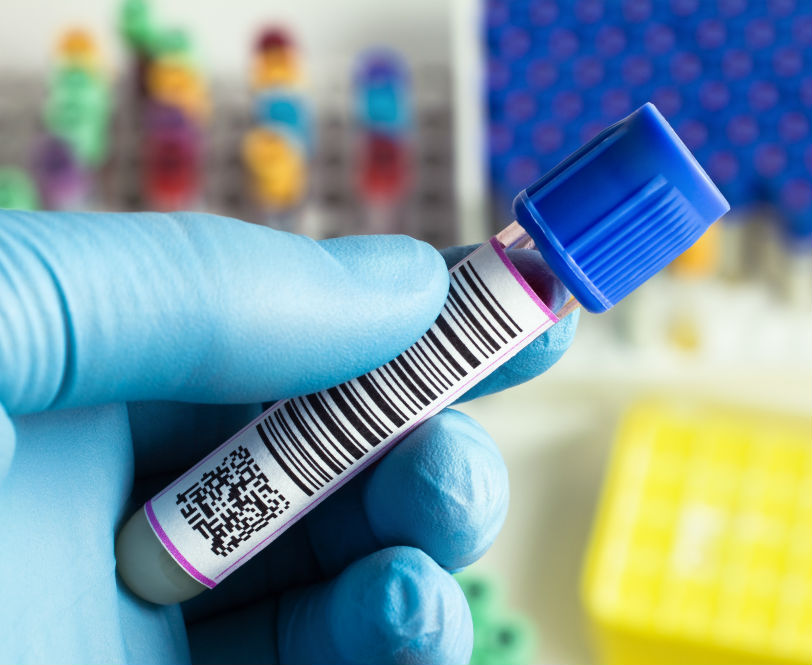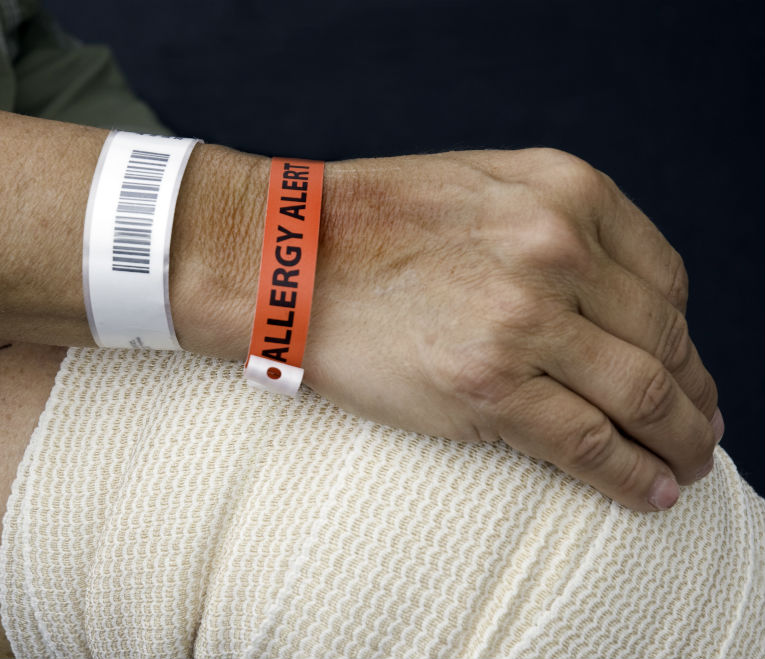Wasp Barcode Technologies: The Barcode Solution People
The Scanner Series: Barcode Scanners In the Healthcare Industry

One of the most overlooked technologies in all of healthcare is that of the barcode and barcode scanner.
No one will deny that, in case of an emergency, medicine and medical tools and proper diagnoses are more pressingly important to treating a patient than a barcode scanner. But it’s also true that without barcode scanners and the codes they read, these things would either be unavailable, or mixed up, or otherwise unusable, even in a crisis.
Over the past few decades, barcode technology has become an important part of the healthcare industry ecosystem, ensuring that all important inventory and assets are accounted for; that laws are followed to the letter; that medicine and samples and other extremely specific items don’t get mislabeled, misused, or misapplied.
In this ongoing series on the importance of barcode scanners across a variety of industries outside basic retail, we’ll examine the role that scanners have taken on in improving how we care for each other.
Maintaining inventory and assets
Keeping track of where your inventory and assets are, how much of any one item you have left in stock, and maintaining a system for keeping everything safe and accounted for—this is the lifeblood of many a business, and healthcare is no exception.
Now that hospitals, doctors offices, and other healthcare providers are increasingly putting barcodes on their important inventory and assets, the chance for running out of an important material at a crucial moment is close to zero: Quality inventory management software helps create systems where scanning a barcode and finding that inventory is low will trigger an automatic reorder, automating what was once an important manual step.

Attaching barcodes to things like medicine is not just the law (more on that in a second). It’s an easy way to create a system of accountability that employees at all levels will have to respect. In this day and age, where things like opiods can be so easily abused, it’s critical to always know exactly how much medication you have, where it’s stored, and where it’s expected to be at a given time. All this information can be obtained with the scan of a single code.
[Tweet "Attaching barcodes to things like medicine is not just the law."]
Managing medication
Since the 2000s, the U.S. Federal Drug Administration has required that some human medications be labeled with barcodes in order to reduce management errors.
The information that is stored on the barcode typically features its National Drug Code (a identification number for that drug), which includes medication, dosage, drug manufacturer, and expiration date.
A study in the New England Journal of Medicine looking at the effect that barcoding medicine had on error rate concluded that: “Use of the bar-code eMAR substantially reduced the rate of errors in order transcription and in medication administration as well as potential adverse drug events, although it did not eliminate such errors. Our data show that the bar-code eMAR is an important intervention to improve medication safety.” Total mortality rate dropped by 20 percent after the adoption of barcodes.
The study also noted that typically, one-fourth of the errors that can harm patients in a hospital setting happen due to errors that were preventable.
As a result, easy-to-use, antimicrobial, and wireless barcode scanners are becoming more commonplace in hospital settings everywhere.
Identifying patients and their needs
Putting barcode labels on patients has also become a common practice in places like hospitals, where large numbers of patients requiring different levels of treatment often co-mingle and interact.
This is another situation where an error would be very easy to make, and the consequences of that error could prove deadly. By outfitting patients with wristbands with barcode labels on them, healthcare practitioners can scan the code and ensure they are treating the right patient with the right medication or practice, at the right time.
Scanners can also wirelessly and efficiently update medical records on the fly, without the need to cross check against existing records that may have not been updated. As long as professionals are given training in how to properly use barcode scanners, the management administration of medicine and patient care will rarely have mistakes.

Collecting and managing samples and specimens
Another major part of working in the healthcare industry is dealing with all kinds of samples and specimens, from blood to urine to other bodily fluids that carry important information about a patient’s health (but are, to be fair, not pleasant to handle and should be kept in their vials, untainted and untouched).
The misidentification of a patient or laboratory specimen reportedly leads to issues for patients and caregivers alike. While most errors are found before they cause any permanent harm to patients, a system that greatly reduces even the chance for mislabeling or misapplying is often greatly appreciated in any industry.
The FDA has regulations about the use of barcodes here as well, relating to blood and blood components.
Streamlining and creating efficiencies
The less time that is spent manually writing down all necessary processes for treatment, the more time doctors and healthcare providers will actually have to interact with their patients, providing them with more personalized and intimate care.
Additionally, costs of reordering crucial medication or tools before there is an impending crisis will plummet as everything becomes automated.
The through line here is that the organization’s time and money becomes easier to come by with the implementation of barcode technology, and those two invaluable resources can be planned for across a doctor’s day, or a hospital’s budget, and so on.
Implementing barcode and barcode scanner technology in healthcare
As barcodes and barcode scanners become more prevalent in the healthcare industry, those who trumpet the benefits of such technology also warn that it’s not a cure-all in and of itself.
Organizations and businesses that start using barcode scanners in the context of caring for people’s health must be trained in how to properly use scanners and execute new processes. Bringing in scanners creates an entirely new workflow that must be recognized and understood; it’s not just “the old way + barcode technology.”
GS1, the nonprofit that develops and maintains the standards for barcodes, has a 10-step process for those looking to implement barcodes into their healthcare service:
- Select the clinical or business process where GS1 barcodes provide benefit.
- Analyze the current situation and desired outcome, then build the business case.
- Establish a working structure.
- Use a project methodology.
- Develop technical solutions and undertake as-is state measures.
- Execute training and create documentation.
- Complete first-stage implementation.
- Deploy new processes.
- Evaluate.
- Monitor, refine and expand.
Looking to the future
Expect to see the use of barcodes grow as more leaders recognize the importance of digital accountability and transparency in medicine.
One trend to look out for in regards to barcode scanners in healthcare is the use of 2D codes and 2D barcode scanners. 2D barcodes hold markedly more information than their traditional 1D counterparts, but the shift to 2D entirely will take time and concerted effort on the part of healthcare providers, who may be satisfied with the status quo.
As the world becomes ever-more interconnected and digitized, and cloud computing and storage become the norm, look for barcode scanners to continue leading the way as the best tool for the job of keeping healthcare professionals accurate, up-to-date, and in control of who they are treating—as well as how, why, and when they treat them.
Trust us: When you’re a patient, you won’t want it any other way.
 One of the most overlooked technologies in all of healthcare is that of the barcode and barcode scanner.
No one will deny that, in case of an emergency, medicine and medical tools and proper diagnoses are more pressingly important to treating a patient than a barcode scanner. But it’s also true that without barcode scanners and the codes they read, these things would either be unavailable, or mixed up, or otherwise unusable, even in a crisis.
Over the past few decades, barcode technology has become an important part of the healthcare industry ecosystem, ensuring that all important inventory and assets are accounted for; that laws are followed to the letter; that medicine and samples and other extremely specific items don’t get mislabeled, misused, or misapplied.
In this ongoing series on the importance of barcode scanners across a variety of industries outside basic retail, we’ll examine the role that scanners have taken on in improving how we care for each other.
One of the most overlooked technologies in all of healthcare is that of the barcode and barcode scanner.
No one will deny that, in case of an emergency, medicine and medical tools and proper diagnoses are more pressingly important to treating a patient than a barcode scanner. But it’s also true that without barcode scanners and the codes they read, these things would either be unavailable, or mixed up, or otherwise unusable, even in a crisis.
Over the past few decades, barcode technology has become an important part of the healthcare industry ecosystem, ensuring that all important inventory and assets are accounted for; that laws are followed to the letter; that medicine and samples and other extremely specific items don’t get mislabeled, misused, or misapplied.
In this ongoing series on the importance of barcode scanners across a variety of industries outside basic retail, we’ll examine the role that scanners have taken on in improving how we care for each other.
 Attaching barcodes to things like medicine is not just the law (more on that in a second). It’s an easy way to create a system of accountability that employees at all levels will have to respect. In this day and age, where things like opiods can be so easily abused, it’s critical to always know exactly how much medication you have, where it’s stored, and where it’s expected to be at a given time. All this information can be obtained with the scan of a single code.
[Tweet "Attaching barcodes to things like medicine is not just the law."]
Attaching barcodes to things like medicine is not just the law (more on that in a second). It’s an easy way to create a system of accountability that employees at all levels will have to respect. In this day and age, where things like opiods can be so easily abused, it’s critical to always know exactly how much medication you have, where it’s stored, and where it’s expected to be at a given time. All this information can be obtained with the scan of a single code.
[Tweet "Attaching barcodes to things like medicine is not just the law."]



